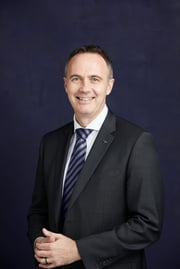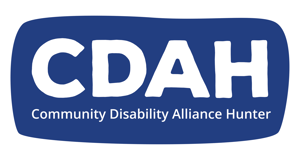CEO Blog: Reflections on Disability and LGBTQIA+ Pride at Mardi Gras

Happy Mardi Gras!
On Saturday evening, after a busy week, I curled up on the sofa to watch the 2024 Sydney Gay and Lesbian Mardi Gras Parade wind its way down Oxford Street, Flinders Street, and Anzac Parade.
There were 194 floats in the parade, and as each of them emerged from Hyde Park, I was able to appreciate the incredible diversity of the LGBTQIA+ community. There were First Nations people, older people, young people, culturally and linguistically diverse people, economically disadvantaged people, and there were people with disability!
In fact, 9 of those 194 floats were directly celebrating and highlighting the intersection between people with disability and their identities as members of the LGBTQIA+ community.
From national peak bodies like People with Disability Australia, First Peoples Disability Network, Autism Spectrum Australia and Tourette Syndrome Association Australia, through to service providers, there was no doubt that people with disability were there to be noticed in all of their fabulousness!
In simple terms, intersectionality refers to the ways in which different aspects of a person’s identity can expose them to overlapping forms of discrimination and marginalisation[1].
There is very little reliable data on the number of LGBTQIA+ people who have a disability in Australia, as most national datasets do not collect information on diverse sexual and gender identities. However, in Private Lives 3 (PL3)[2], Australia’s largest national survey of the health and wellbeing of LGBTQIA+ people, researchers found that more than a third of participants reported a disability or long-term health condition.
The Disability Royal Commission focused on several issues papers, research reports and public hearings on the intersection between disability and gender, sexuality, First Nations people and culturally and linguistically diverse people.
In November 2022, the Disability Royal Commission published a research report from La Trobe University titled ‘Violence, abuse, neglect and exploitation of LGBTQA+ people with disability: a secondary analysis of data from two national surveys’[3].
This report was compiled to inform the Royal Commission and present data on the experiences of LGBTQA+ people with disability in Australia.
The report summary noted several findings that pointed to priority populations and key issues that require specific initiatives for LGBTQA+ people with disability in Australia. These included:
- High rates of suicidal ideation and suicide attempts, particularly among young people aged 14-21 years, people with intellectual disability and trans and gender-diverse people with disability.
- High rates of harassment, abuse and neglect based on sexual orientation and/or gender identity, particularly at home among young people aged 14-21 years.
- High levels of family violence, including from parents, and low levels of reporting or satisfaction with support from services.
- Low levels of support from disability support services and the NDIS regarding LGBTQIA+ people and their needs.
This is why I think Saturday night’s parade was so important.
It challenges our community to understand that every person is so much more than just the part they see (or choose to see). In the intersectionality of others are great strengths and possibly even things they have in common.
It puts the onus on disability service providers (just like Castle) to be aware of intersectionality and integrate it into their offerings so that they can embrace, nurture and support the full expression of the people who choose and trust them.
And for people with a disability, who might have a part of themselves they keep hidden for fear of being seen as even more different, seeing others like them is an important part of self-acceptance and confidence.
The theme for this year’s Mardi Gras was ‘Our Future’, and the festival guide proclaimed:
Ours to define, ours to create, ours to demand and ours to protect.
Our future is in danger, our future is limitless, our future is beautiful and our future is in our hands.
It is informed by our past, impacted by our present, ours to manifest and full of endless possibilities.
I think that is a worthy aspiration.
But wait, there’s more…
The team at Community Disability Alliance Hunter (CDAH) have already worked out that intersectionality is important.
Queer Peers is a peer-led group connected to CDAH that is facilitated and run by people with lived experience of disability, for people with lived experience of disability who also identify as being in the LGBTQIA+ community.
You can find the details at https://www.cdah.org.au/queer-peers/
[1] Understanding Intersectionality, accessed 3 March 2024 (https://www.vic.gov.au/understanding-intersectionality).
[2] Hill, A. O., Bourne, A., McNair, R., Carman, M. & Lyons, A. (2020). Private Lives 3: The health and wellbeing of LGBTIQ people in Australia. ARCSHS Monograph Series No. 122. Melbourne, Australia: Australian Research Centre in Sex, Health and Society, La Trobe University.
[3] Hill, A. O., Amos, N., Bourne, A., Parsons, M, Bigby, C., Carman, M., & Lyons, A. (2022). Violence, abuse, neglect and exploitation of LGBTQA+ people with disability: a secondary analysis of data from two national surveys. Melbourne, Australia: Australian Research Centre in Sex, Health and Society, La Trobe University.
